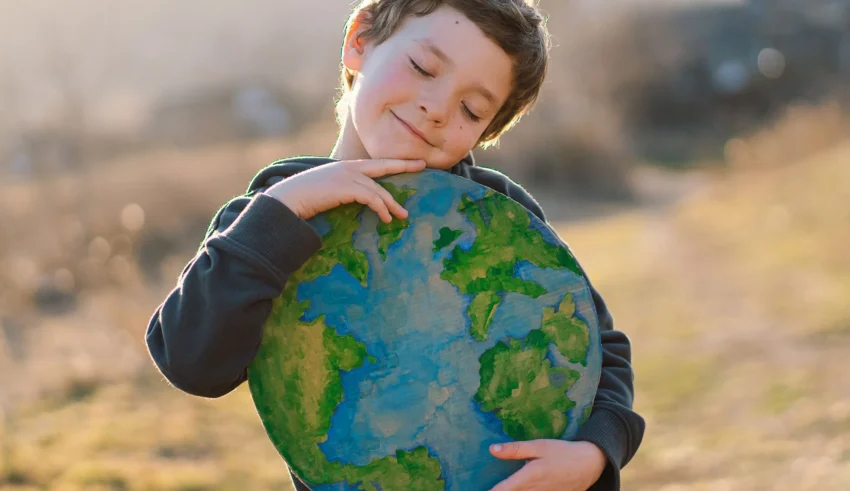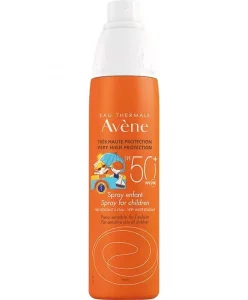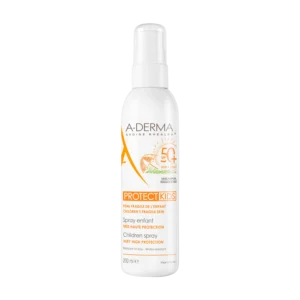
Climate change is causing changes to the environment which affect everyone. The 20 hottest years on record worldwide have all occurred in the last 22 years, with the last 5 being the hottest. While natural disasters such as forest fires, hurricanes, and other forms of extreme weather can cause lasting physical, mental, and emotional damage to everyone, certain populations, such as children, are hit harder.
In this article from The Dermo Lab, we’ll look at climate change’s effect on children’s skin, and how parents can protect their children from ultraviolet (UV) rays.
How are children affected by climate change?
Children are particularly vulnerable to environmental changes, including extreme changes such as heat waves and air pollution, which are exacerbated by climate change. As their bodies and metabolisms are still developing, children are unable to regulate their temperature properly. Compared to adults, children are exposed to more pollutants in the air, food, and water. At the same time, they have more difficulty eliminating inhaled or ingested pollutants. The simple fact that children are children, spend more time outdoors, and are dependent on adults to care for them, also exposes them to a much higher risk of climate-related health problems than adults.
Which skin conditions are aggravated by climate change?
A number of skin diseases seem to be aggravated by climate change. These include inflammatory disorders such as eczema (atopic dermatitis). While the effects of UV exposure, humidity, and temperature on eczema are unclear, air pollution is known to trigger eczema flare-ups. Similarly, emotional stress causes flare-ups of eczema, vitiligo, and psoriasis. Such phenomena can be expected in communities that have been affected by natural disasters.
High temperatures and exposure to UV rays, as well as damage to the ozone layer, are considered factors that increase the risk of developing various skin cancers.
Is it true that some sunscreens are more environmentally friendly than others?
There are many points of view on the best way to protect your children from the harmful effects of UV rays. You should always make sure that your children are wearing sun-protective clothing and seeking shade or avoiding the sun during peak hours (10 a.m. to 4 p.m.) to limit the use of sunscreen.
1- Chemical (organic) sunscreens:
Chemical sunscreens are the most commonly used. They absorb and reduce the ability of UV rays to penetrate the skin.
Their most common active ingredients – oxybenzone, butylparaben, and octinoxate – have been identified as harmful to the environment.
2- Physical (mineral or inorganic) sunscreens:
The second type, often touted as “environmentally friendly” and “reef-safe”, is even less popular than chemical sunscreens. Physical sunscreens block or reflect UVA and UVB rays, but leave a whitish tint on the skin and are often greasy and difficult to penetrate. The most common ingredients in physical sunscreens are zinc oxide and titanium dioxide.
In summary: Shading and covering up are the most effective ways to prevent sun-induced skin damage. However, if these solutions don’t make sense and you plan to expose yourself to the sun, the American Academy of Dermatology recommends regular use of sunscreen. While both chemical and physical filters are considered safe for humans, physical filters appear to have fewer harmful effects on the environment.
How can you protect your child’s skin?
1- Use sunscreen
All children, whatever their skin tone, should wear sunscreen with an SPF of 30 or higher. Whatever sunscreen you choose, make sure it’s broad-spectrum (protects against both UVA and UVB rays) and, if children are in or near water, that it’s labeled water-resistant. Apply a generous amount, and reapply often.
Our sun protection choices for children’s sensitive skin:
Eau Thermale Avène Sunscreen Spray for Children SPF 50+
A-Derma Protect Children Spray SPF 50+
2- Avoid the strongest rays of the day
Try to keep your child in the shade when the sun is strongest (generally from 10 a.m. to 4 p.m. in the northern hemisphere). If children are in the sun during this time, apply sunscreen again and again, even if they’re just playing in the garden. Most sun damage occurs during daily activities, as it’s easy to forget to use sunscreen then. Don’t forget that even on cloudy, cool, or overcast days, UV rays reach the earth. This “invisible sun” can cause unexpected sunburn and skin damage.
3- Cover up
One of the best ways to protect your children’s skin is to cover up. To find out if they offer sufficient protection, put your hand inside the clothing to make sure you can’t see through it. Some clothes have an ultraviolet protection factor (UPF), so check the labels.
Babies’ skin burns more easily, so keep them out of the sun as much as possible. If your baby is going to be out in the sun, dress him in light, body-covering clothing, including wide-brimmed hats to protect his face. If your baby is under 6 months old and small areas of skin (such as the face) are still exposed, apply a small amount of SPF 30 sun cream to these areas.
Even older children need to escape the sun. For outdoor events, bring a large umbrella or pop-up tent to play under. If it’s not too hot and doesn’t make the kids even more uncomfortable, ask them to wear light, long-sleeved shirts and/or long pants.
4- Put on sunglasses for your kids
Exposure to the sun damages both eyes and skin. Over time, sun exposure can lead to cataracts (opacification of the lens, resulting in blurred vision) later in life. The best way to protect your children’s eyes is to wear sunglasses that offer 100% UV protection.
Let kids choose their own pair – many options are fun, with multicolored frames or cartoon characters. Look for sunglasses with at least 99% UV protection.
5- Check their medication
Some medications make the skin more sensitive to UV rays. Ask your doctor or pharmacist if your children’s prescription medications (especially antibiotics and acne medication) and over-the-counter medicines can increase their sensitivity to the sun. If so, take extra precautions against the sun. The best protection is to cover up or stay indoors because even sunscreen can’t always protect skin from sun sensitivity.
Last Updated on June 20, 2024










